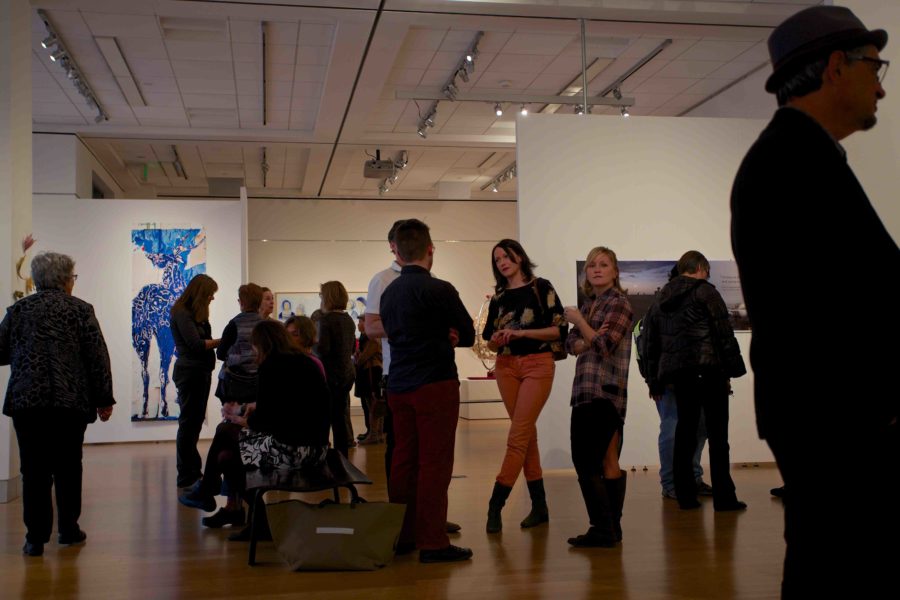The entrance of the SRJC Faculty Art Show is like a garden that lures you in to see more.
The herbal illusion comes into form with paintings of the good Earth, studies of natural objects and a medium-sized “Perplexus” centered like a garden globe. You might miss Lisa Beerntsen’s big oil paintings if you fall prey to the gravitation field emitted by the “Perplexus.” And you could be lured in too deeply and quickly from the pull of the other pieces. But Beerntsen’s fields and trees brought into being with rich golden oil paints are impossible to miss on your way out.
As in life, this art exhibit soon gives way to the mass encounter traffic effect of multi-communication. By the time I was out of the reception area, I heard what sounded like a real-estate conversation. Or maybe it was an interior decorator’s sales pitch to a realtor. Someone commented it would be a nice touch if there was a bench to sit on by the still-lifes and ceramics, “You know, to see how well they’d work out in the home.”
Well, nice maybe, but definitely not a good idea. It was already hard enough for me to keep my hands off Joel Bennet’s burnished pit-fired ceramic, “Post Colombian Uda Drum.” It’s easy to understand why he didn’t want to put the drum-skin on it. That and a bench would have the place jammin’.
The size of Michael Loffredo’s airplane scene does what art is supposed to do: jerk you out of your physical space. The unframed, hanging painting was the size of a queen-size bed sheet.
Swerve over to the left of Loffredo’s plane to examine Alan Azherderian’s assemblages. As I faced his “100 Years of Solitude,” a woman beside me remarked she didn’t get it. So she didn’t. What I liked most about it was how, although not very large, it looked better to me as I got further away from it. But maybe that says more about my astigmatism than Azhderian’s lovingly carved blocks of colored wood, precisely fitted into a fibrous mosaic.
Bounce off the wood blocks to the back end of the exhibit to Donna Larsen’s “Facsimile; Radiant Flower,” an impressive feat of physical accuracy. Her incorporation of digital data into paper and paste produces a hybrid art form. Her exceptionally precise collaging technique features graphic design that interacts with paint on canvas.
A gigantic “Perplexis” takes over what’s left of the back area, providing closure to the exhibit. Michael McGinnis is the creator of the Perplexis, an MC Escher world contained in a moveable sphere. If you haven’t seen the Perplexis in 3D, you won’t know what it’s capable of. The more you look at it, the more you’ll find. Isn’t that what good art does?


